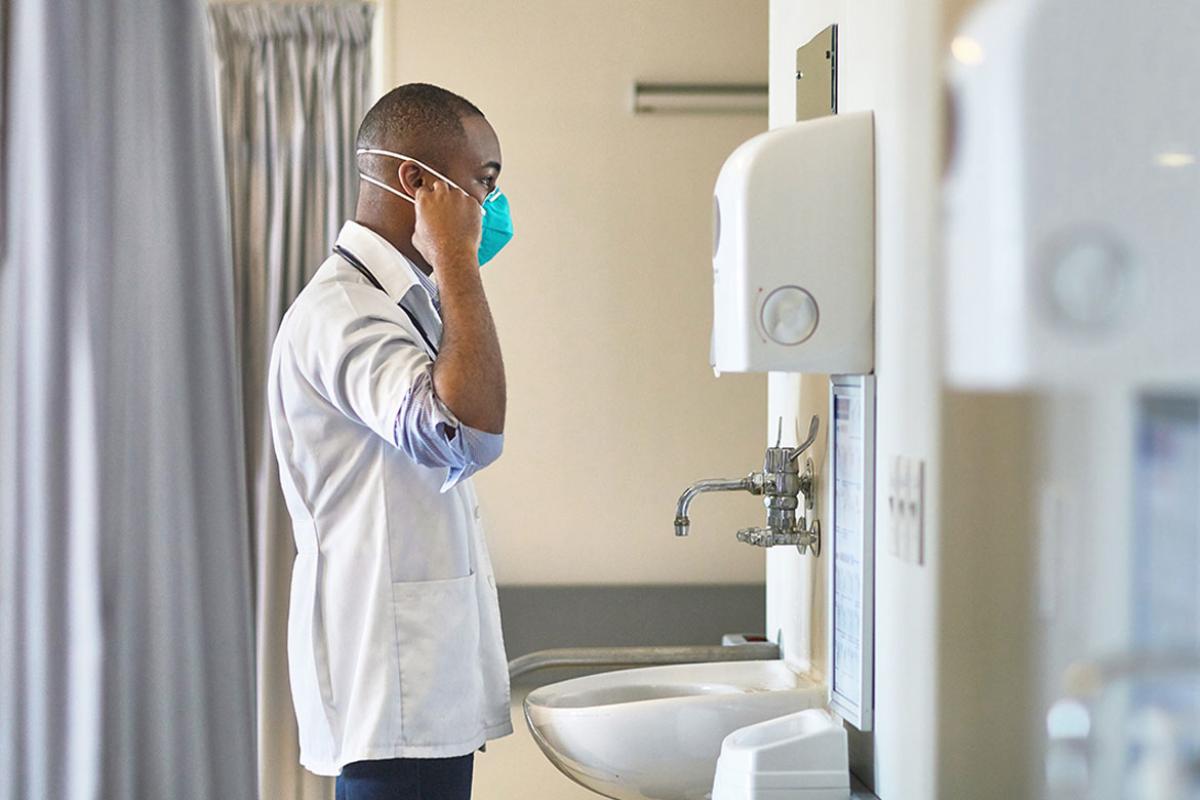As a first-year medical student attending a state-level advocacy event in California, Briana Ma quickly learned how policy decisions could shape her future as a physician. Soon she was attending AMA meetings and pursuing leadership positions through the AMA Medical Student Section (AMA-MSS).
Now, as the medical student member of the American Medical Association Political Action Committee (AMPAC) Board of Directors, she’s helping ensure that medical students play a role in AMPAC’s policies and contributions. What have her experiences with AMPAC and the AMA taught her about leadership and advocacy? Ma offered some insight.
AMPAC works for medical students
As an AMPAC board member, Ma—now doing a research year between her third and fourth years of medical school—helps decide where physician-backed political donations go. The PAC, which is completely bipartisan, supports candidates who align with the AMA’s mission to improve health care and protect the interests of patients and physicians.
“I used to wonder how the advocacy work we do as medical students connects to real-life policy,” Ma said. “I realized PACs play a crucial role in that process, and I wanted to be part of the conversation that shapes health care policy.”
How does AMPAC work for future physicians?
Medical students vote on policies at AMA meetings, and those priorities help shape the AMA’s broader advocacy agenda. When AMPAC evaluates political candidates, board members—including the medical student representative—consider which candidates align with those advocacy efforts. This ensures that the proposals that medical students advance in the House of Delegates play a part in the political process.
Explore further with an episode of “AMA Update” that explores AMPAC’s role. Rob Jordan, vice president of political affairs at the AMA, answered the most common questions about the AMA’s bipartisan political action committee, AMPAC contribution criteria and political education, as well as AMPAC's role in political and medical advocacy.
Dive deeper:
- How to boost your medical student leadership skill set
- Why medical students should get involved in local advocacy
- Tips to find enriching medical student leadership opportunities
- 3 keys for medical student advocates on Capitol Hill
Key lessons in advocacy
Prior to her role on the AMPAC board, Ma was an AMA-MSS delegate for her medical school and also honed her leadership skills through the AMA Medical Student Outreach Program.
Each new role gave her a different perspective on how advocacy translates into action. Over time, Ma wanted to gain a better understanding of how the policy discussions happening in AMA meetings later had an influence on political decision-making. That led Ma to apply for the position on the AMPAC board.
“Serving on the AMPAC board has given me a broader perspective on leadership opportunities,” she said. “Many of the board members hold leadership roles within the AMA and beyond, and I’ve learned how they balance and integrate their different responsibilities.”
For Ma, the transition from medical student advocate to AMPAC board member has shown that health care policymaking and the practice of medicine are very intertwined.
“I’ve learned that advocacy isn’t just about policy—it’s about building relationships with policymakers,” she said. Since Democrats and Republicans share power across the country, “we have to work with leaders on both sides to make sure physicians’ voices are heard.”
Ma has also gained a deeper appreciation for the long-term impact of advocacy. The issues medical students fight for today—including efforts to reform medical education, address physician workforce shortages and improve patients’ access to care—can take years to materialize into policy changes. But those changes often start with engaged medical students taking action.
“Medical students do have a say in the political process,” she said. “The advocacy work we do as students doesn’t just stay within AMA meetings. It carries forward into real policy action in Washington.”
Learn how the AMA’s advocacy network and training can turn your passions into health policy. Connect with nearly 52,000 AMA student members as you get hands-on experience advocating for change at the state and federal levels through trainings, meetings and events in Washington, D.C.—and online.




